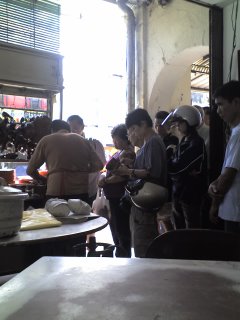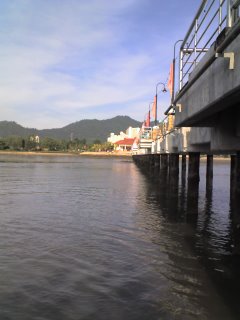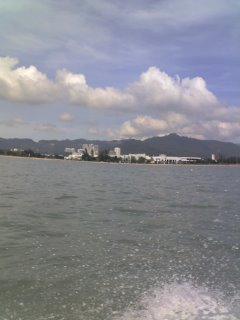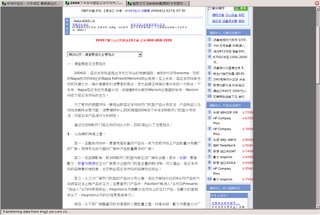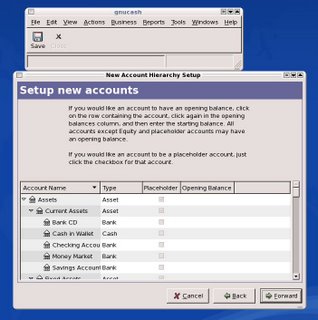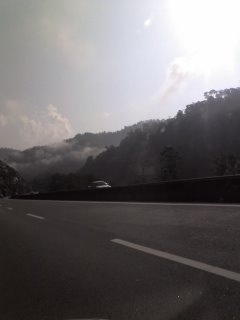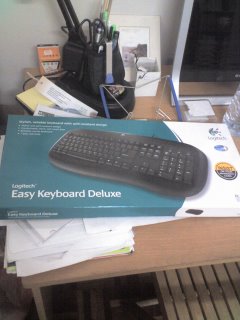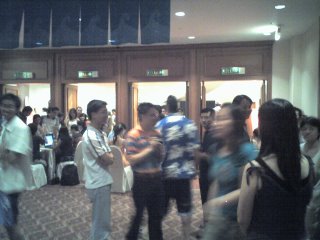The following pictures are from
Jeff Ooi's Homepage
Hishammuddin in 2005
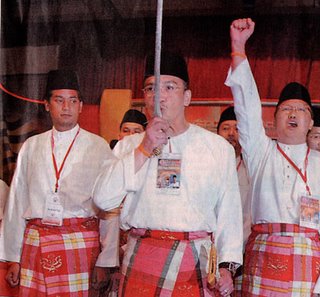
Hishammuddin in 2006

Don't ask me when they want to do this
Note: In case you are not aware, Hishammuddin is our education minister.
我读了这篇社论, 感慨万分。 毕竟各民族生活在同个屋檐下, 理应同甘共苦, 为全球化的冲击作准备。 反观我们的所谓‘领袖’,在国家级会议上抡刀动枪, 不是为了抵抗外侮, 而是研究怎样更进一步的把同国的华族人士赶尽杀绝。 这事发生在已独立40年的国家,是一种堕落。
文中提到: “基於共同的前途,的的確確,應該要深沉思考了!”。 只怕现在我们要思考的,已不只“共同的前途”那么简单。
(星洲日報/夜雨晨風‧作者:鄭丁賢‧2006/11/17)
是時候做一些深沉的思考了。
有人在大會上說,不要怕流血。
有人說,希山慕汀的馬來劍甚麼時候才要“刺”出去。
有人說,行動的時刻到了。
真的有如此深仇大恨嗎?
族群之間,雖然文化背景不同,看法意見有差別,但是,只要是人,都會有差異;然而,差異絕對不應該是仇恨。
沒有!任何頭腦還清醒的人們,都會瞭解沒有仇恨;看看周圍,也確實沒有仇恨。
相反的,族群之間,實在有著更多的共同點,互相諒解、接納和協助。
我們不是在開齋節、農曆年、屠妖節都開放門戶嗎?我們不是在運動場上並肩努力嗎?我們不是一起拼經濟、拼治安嗎?
我們不是對外宣傳,馬來西亞是亞洲文化融合的匯集嗎?我們不是曾經引以為傲的說,這個國家是族群和平共處的楷模嗎?我們不是矢言要成為先進國嗎?
我們不是擁有同樣的一個國家嗎?
但是,就在一個大會,為了一個議程,這一切,都被拋諸腦後。
有人很輕易的辯解說,這只是配合一些特殊的需要,不需要在意。
然而,一個個鏡頭,透過電視現場廣播全國;一句句話語,透過報章的引述,傳給所有人民。
仇恨的種子,可能就此播下。族群之間的友誼、信任、合作,也許就開始變質。
一分鐘的激昂,抵銷了一年的努力;5天的集會,消磨了一個國家的願景。
為了“特殊”需要,值得嗎?
作為執政黨,任務是建設國家,塑造團結,這是人民的付託。國陣的架構是權力分享,協商共治,這是政府的基石。
如今,一幕又一幕的攻訐,讓一些人民情緒高漲,另一些人民擔心失望;對友黨的無情攻擊,力道不下於對政敵的廝殺,這讓友黨日後如何在國陣的旗幟下爭取支持和認同!
基於共同的前途,的的確確,應該要深沉思考了!
English Translation (Not verbatim translation, but the meaning is there):After reading the following write-up, I can only relent. The fact that we, the Malaysian people, live in the same country, on principle we should help each other and cooperate to counter the impact of globalisation. However look at our so called 'leaders', in a national party assembly, they wielded the 'keris', a traditional Malay short sword, and acted as if they were going to a war. Their warring effort wasn't targetting any foreign invading powers, but instead towards the Chinese Malaysians who are hardworking and therefore better-off. It is shameful to let this incident to happen in a country that claimed independence 40 years ago.
In the write-up, it says "base on our shared future, it is time for us to ponder upon this issue seriously." Given the current political climate, I am afraid what we need to think is more than "our shared future".
(Sinchew Daily, by Zheng Din Xian. 17 November 2006)
It is time to think it through.
In the Umno party meeting, someone advocated not to afraid to shed blood.
Some inquired when Hishammuddin would really thrust out his keris instead of just holding and kissing it.
Some said it was the right time to fight.
Is there so much hatred among Malaysians? Or more specifically, among Malays and Chineses?
There are definitely inter-racial differences in terms of cultural background and world views, but no matter what, each person is unique and thus differs from the rest. Therefore differences should never be the source of hatred.
'No'! Any person with a rational mind will understand there is no hatred; look around us, really, there isn't any.
On the other hand, there are alot of similarities among us. We should understand, accept, and help each other.
Aren't we celebrating Chinese New Year, Hari Raya and Deepavali together? Aren't we cooperating and cheer for each other in the sports events? Aren't we working hard for our future and fighting crimes together?
Aren't we telling the world we are the melting pot of Asian cultures? Aren't we saying we are the model of harmonious multi-racial society? Aren't we vowing to be an advanced country?
Aren't we embracing the same country?
But for a party assembly and for some (personal) agenda, all the above were forsaken.
Somebody will try to argue all those were for a 'special occasion', and we should take that with grains of salt.
But all the actions were broadcasted live to the country through the TV; all the words were brought forward to the people through newspapers.
The seeds of hatred may be sowed. The friendship, trust and cooperation among races may start to mutate.
One minute of 'show time' destroyed the whole year's effort to unite the country. The 5-day assembly, killed the nation's vision.
Because of the very 'special occasion', does it worth it?
As the elected political party, its tasks are to advance the country and build up unity. This is the entrustment of the people. The framework of the National Party (in Malay, Barisan National) consists of sharing of power and ruling through negotiation with other member parties. These are the cornerstones of our government.
Right now, attacks after attacks to the member parties (which consist of Chinese and Indian parties) are stimulating certain race's sentiments but scaring and worrying other races. Forays against the friendly parties are as merciless as to enemies in field, how are all the member parties to unite after this?
Base on our shared future, really, it is time for us to ponder upon this issue seriously.



